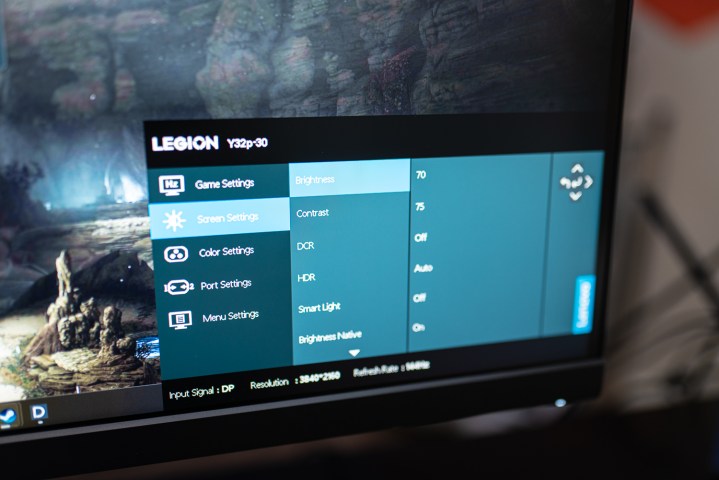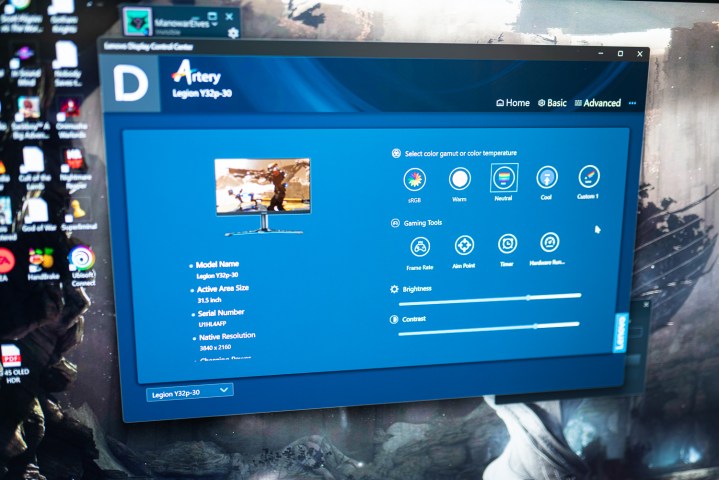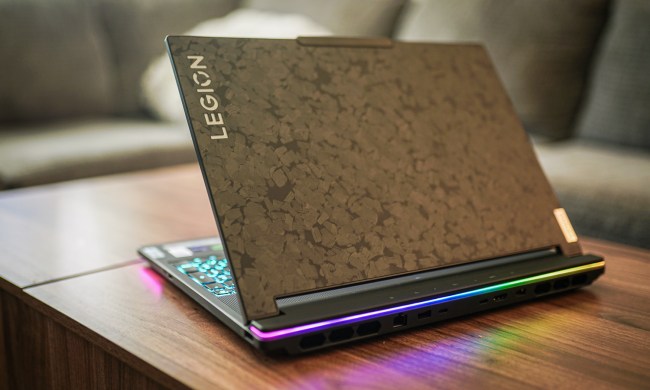
“The right balance of features for slightly too high of a price, the Lenovo Y32p-30 is still a great 4K gaming monitor.”
- Fantastic color accuracy
- Sturdy stand with multiple adjustment points
- Built-in speakers and KVM switch
- Great for desktop use
- Poor HDR
- A little too expensive
I didn’t expect much from the Lenovo Legion Y32p-30, especially given its place in the market as a specs-over-design gaming monitor. It doesn’t help that a new crop of OLED displays has started challenging pricing and features, offering impressive HDR and better motion clarity for a lower price than we’ve seen before.
But Lenovo includes a lot to chew on. The Legion Y32p-30 offers a perfect balance of features and impressive image quality. The price is just, unfortunately, a little too high at $750.
The base of the monitor, large as it is, features angled cutouts for an attractive look, and there’s a soft RGB underglow (which, for the record, you can turn off). Unlike a display like LG UltraGear OLED 45, it’s hard to tell where these lights are coming from. Lenovo uses a dark diffusion layer, making the glow look like it’s just showing up on your desk, not illuminating out of the bottom of the monitor.
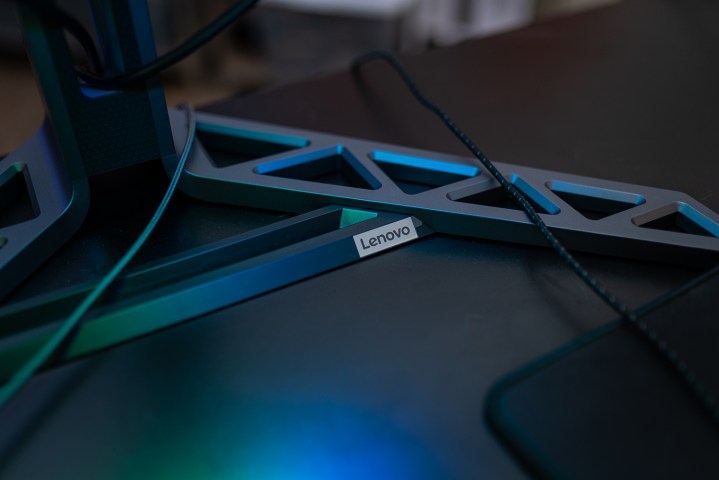
Combined with solid adjustment and a near-borderless screen, the Lenovo Y32p-30 looks fantastic. It doesn’t sacrifice features, either. You get a built-in KVM switch, so you can swap your peripherals between several inputs, as well as two 5-watt speakers. Included speakers are tough to find in monitors, and although these ones don’t sound great, they do the job of producing sound if you want to take off your gaming headset. And when do you, the Y32p-30 includes a pull-out headset stand.
In addition, Lenovo includes an ambient light sensor for its Smart Light feature, which dynamically adjusts the brightness based on the light of your room. There’s also a USB-C port with 75 watts of power delivery, allowing you to hook up a laptop with a single cable (even if you can’t connect a proper gaming laptop).
| Lenovo Y32p-30 | |
| Screen size | 31.5 inches |
| Panel type | IPS |
| Resolution | 3840 x 2160 |
| Peak brightness | 400 nits |
| HDR | DisplayHDR 400 |
| Local dimming | 16 edge-lit |
| Contrast ratio | 1,000:1 |
| Response time | 0.02ms (MPRT), 2ms (GtG) |
| Refresh rate | 144Hz |
| Curve | N/A |
| Speakers | 2x 5W |
| Inputs | 1x DisplayPort 1.4, 2x HDMI 2.1 |
| Ports | 2x USB 3.2 Gen 1 Type-A, 1x USB-C (75W power delivery), 3.5mm headphone |
| List price | $750 |
The USB-C port joins two USB-A ports with USB 3.2 Gen 1 speeds (5 Gbps). I would’ve liked to see a couple more like the Alienware 34 QD-OLED includes, especially with the KVM switch, but you still have enough to hook up your keyboard and mouse and route them to different inputs. You also get two HDMI 2.1 connections, offering a full 4K at 120Hz if you hook up a console, and a display DisplayPort 1.4 connection.
That DisplayPort connection is interesting, too. It carries VESA’s Adaptive Sync standard, which is the group behind the DisplayPort connection. The monitor is certified with AMD FreeSync Premium, but the Y32p-30 joins a small but growing list of displays that are certified to support a variable refresh rate regardless of the GPU brand you have.

Perhaps more important is what Adaptive Sync certifies for overshoot. The Lenovo Y32p-30 apparently comes with a Moving Picture Response Time (MPRT) of 0.2 milliseconds. The gray-to-gray response time is actually 7ms, with the monitor using various overdrive levels to get it lower. The Adaptive-Sync standard accounts for excessive overshoot, as well as response time (you can see a full list of criteria on the AdaptiveSync website).
I tested each level and only noticed a small amount of overshoot on the highest overdrive level. Nothing to be worried about. Still, it’s nice to have a certification behind the display so you know that you’re getting what Lenovo advertises. And for what it’s worth, Lenovo’s advertising is a lot more accurate than many displays I’ve tested.
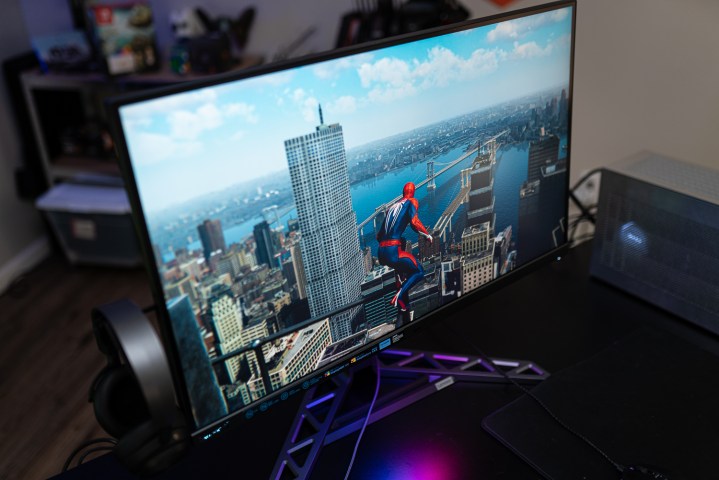
The question remains, though: is it fast enough for gaming? Yes, but it’s not the fastest we’ve seen. Recent OLED panels like the Asus ROG Swift PG27AQDM have sub-millisecond response times, along with a 240Hz refresh rate. The Lenovo Y32p-30 is plenty fast with its 144Hz refresh rate, but it’s still a decent crop below the wave of OLEDs we’ve seen for highly competitive gamers.
Where the display makes up for that is resolution. It’s a full 4K panel at 31.5 inches, offering a pixel density of just shy of 140 pixels per inch (ppi). The OLED panels we’ve seen like the LG UltraGear OLED 27, clock in close to 108 ppi.
Out of the box, there are no issues doing color work on this monitor, and most gaming displays can’t say that.
That extra bump in clarity makes the Lenovo Y32p-30 a great option for desktop use. It certainly helps that it’s super color accurate, as well. I measured a color error of only 0.5 in its Neutral color mode, which is better than displays that cost twice as much in many cases. Out of the box, there are no issues doing color work on this monitor, and most gaming displays can’t say that.
You have several color modes to choose from, but none of them reached the heights of the Neural color mode. The sRGB mode, for example, topped out with a color error of 1.5, which isn’t bad, but still below what you get in the Neutral color mode.
It’s easy to access these settings, too. Lenovo includes an inoffensive on-screen display (OSD) that you can access with the joystick on the back of the display. I never used it, though. You can access all of the settings of the display through Lenovo’s Artery software, which doesn’t require an extra cable to your PC like the Sony InZone M9. You can even sync multiple displays through the software, matching their color profile and settings.
Desktop use is great, but the Y32p-30 starts to run into issues with media consumption. It’s a bog standard IPS monitor with a peak brightness of 370 nits and a contrast ratio of 910:1 as measured by my SpyderX. It’s certified for DisplayHDR 400, but this really isn’t the monitor for HDR.
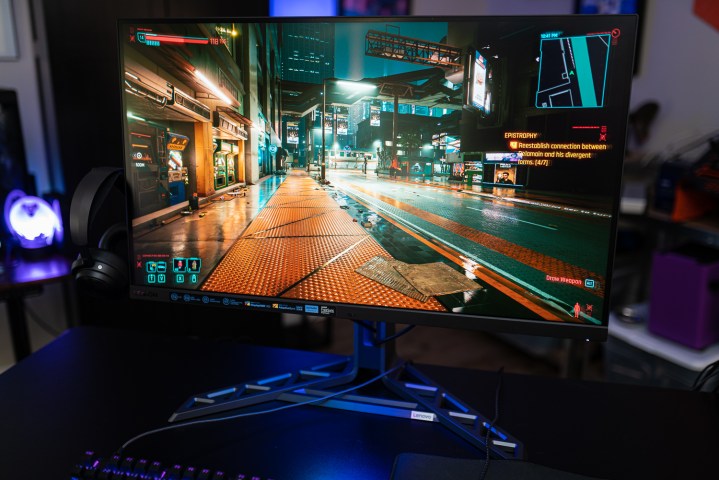
With 16 edge-lit local dimming zones, HDR isn’t an option on the monitor. You can turn it on, and Lenovo includes several HDR modes, but it doesn’t change the image much. In Cyberpunk 2077 and Horizon Zero Dawn, it was slightly more vibrant, but I’d have a hard time telling you if HDR was on in a blind test.
It’s a little harder to justify the Y32p-30 when HDR is brought into the mix, especially when displays like the Cooler Master Tempest GP27Q and GP27U offer excellent HDR with a mini-LED backlight. That monitor carries its own issues, particularly with blooming, but there’s no denying it looks better than the Y32p-30 in cinematic games.
I have no doubt that if Lenovo released the Y32p-30 early last year, it would earn an Editor’s Choice badge.
On the other hand, to get a great HDR monitor pushing the size, resolution, and image quality of the Y32p-30, you have to spend close to twice, as much as evidenced by a display like the Samsung Odyssey Neo G8. And some displays, like the Corsair Xeneon 32, match the Y32p-30 in quality while costing around $250 more.
But the display that really challenges the Y32p-30 is the Gigabyte M32U. It clocks in at $680, a clean $70 less than the $750 Lenovo is asking for with the Y32p-30. There are some elements of Lenovo’s display that make up that price difference, in particular the stand and Artery software. The point remains, though, that Gigabyte’s monitor offers the major elements of the Y32p-30 for $70 less.
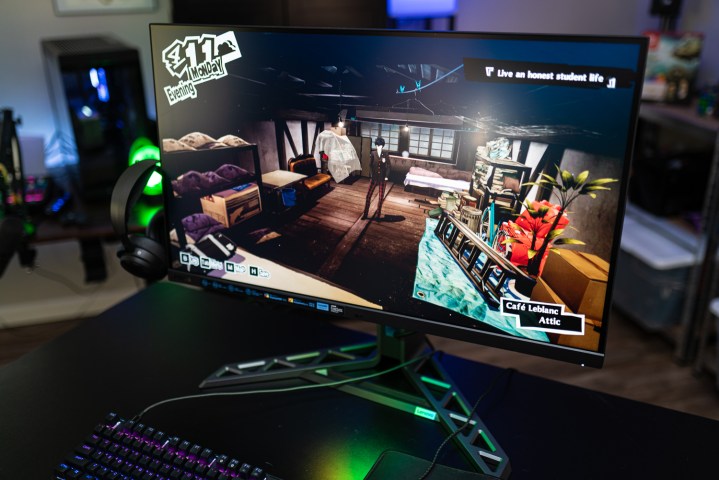
I have no doubt that if Lenovo released the Y32p-30 early last year, it would earn an Editor’s Choice badge. In 2023, there are more mini-LED monitors around, as well as cheaper 4K options like the M32U, which makes it a little tougher to recommend.
That doesn’t mean you should write off the Y32p-30. It’s still a great display, particularly if you want something that can pull double duty as a solid option for both a desktop and gaming monitor. It doesn’t specialize as heavily in either of those areas as some other recent displays I’ve seen, but it doesn’t need to. It’s just a shame it’s not a little cheaper.


